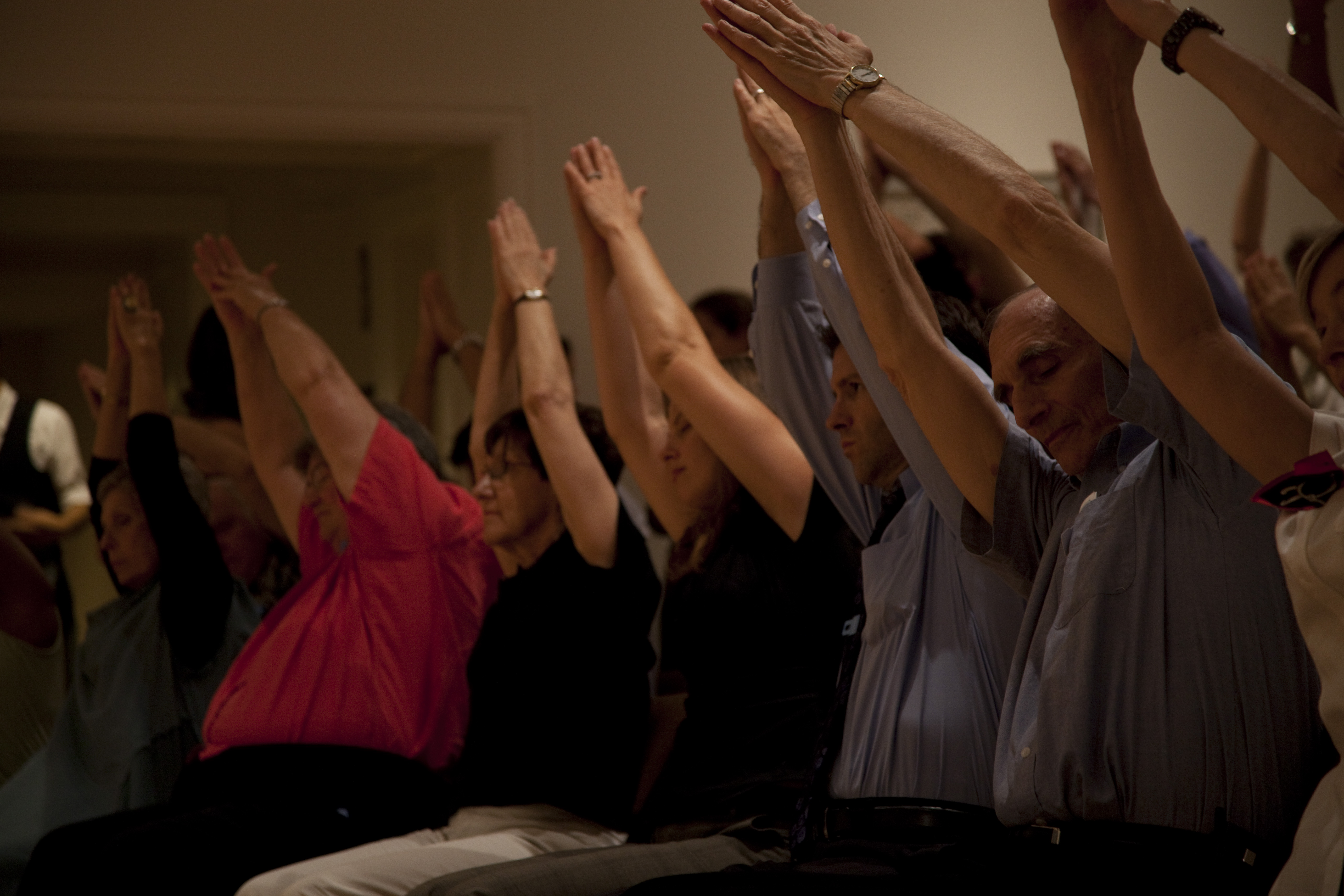
Wassily Kandinsky, Painting with White Border (Moscow), 1913. Oil on canvas, 55 1/4 x 78 7/8 in. Solomon R. Guggenheim Museum, New York, Solomon R. Guggenheim Founding Collection, By gift 37.245. © 2011 Artists Rights Society (ARS), New York / ADAGP, Paris.
With the change of seasons approaching and twilight coming earlier, I was reminded of the ways in which this special time of day affected Kandinsky as he worked toward the creation of Painting with White Border (Moscow).
Curator Elsa Smithgall writes in the exhibition’s catalogue that Kandinsky’s work was deeply affected by the moment when day turns to night. His discovery of abstraction came out of a revelatory experience that took place at twilight. Kandinsky recalled a moment after his arrival in Munich when he was . . .
“enchanted . . . by an unexpected spectacle that confronted me in my studio. It was the hour when dusk draws in. I returned home . . . still dreamy and absorbed in the work I had completed, and suddenly saw an indescribably beautiful picture, pervaded by an inner glow. At first, I stopped short and then quickly approached this mysterious picture, on which I could discern only forms and colors and whose content was incomprehensible. At once, I discovered the key to the puzzle: it was a picture I had painted, standing on its side against the wall.”
Kandinsky was unable to re-create this visual experience during the light of day, recalling, “I constantly recognized objects, and the fine bloom of dusk was missing. Now I could see clearly that objects harmed my pictures.”
Although at first glance Kandinsky’s work may appear to be abstract, his paintings and works on paper contain motifs that evoke the emotional sounds of his beloved Moscow, such as the troika and Saint George and the Dragon. Kandinsky was attracted to abstraction but was unwilling to relinquish the “spiritual sound” that objects contributed to his work. The artist spoke of “dissolving objects to a greater or lesser extent . . . so that they might not all be recognized at once and so that these emotional overtones might thus be experienced gradually by the spectator.”
It took Kandinsky five months and fifteen studies, including the Phillips’s Sketch I for Painting with White Border (Moscow) to arrive at the solution for Painting with White Border : “I was sitting looking in the twilight at the second large scale study, when it suddenly dawned on me what was missing . . . the white edge.”
Might the artist’s sensitivity to twilight, a liminal time of day, have affected his preference for a style of painting that is on the threshold between figuration and abstraction?
-Karen Schneider, Librarian



